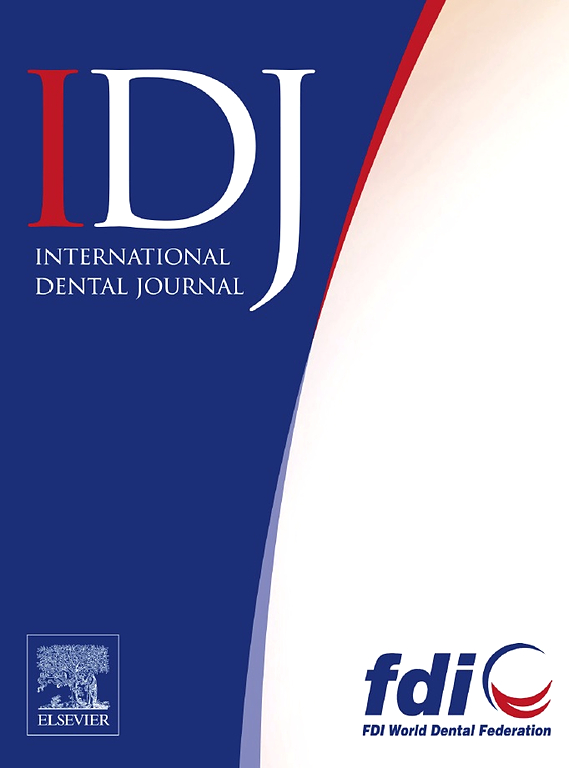生活在脆弱环境中的儿童成功的口腔健康干预措施-范围综述
IF 3.7
3区 医学
Q1 DENTISTRY, ORAL SURGERY & MEDICINE
引用次数: 0
摘要
促进幼儿口腔健康机会均等是一项全球卫生优先事项。为解决持续存在的口腔健康不平等现象,已经制定了若干干预措施。然而,对这些干预措施如何改善儿童口腔健康的了解仍然有限。本综述旨在探讨研究人员对西方国家生活在脆弱环境中的幼儿(≤5岁)及其家庭口腔健康干预措施成功的解释,以加强未来的干预措施。一个全面的搜索策略被开发并应用于三个电子数据库:PubMed, Embase.com和Clarivate Analytics/Web of Science Core Collection。这产生了21415篇文章,这些文章是根据系统评价和meta分析扩展范围评价指南的首选报告项目进行筛选的。纳入的文章使用宏观、中观和微观系统级框架进行主题分析。从总共21415份参考文献中,251份被评估为合格;纳入39篇文章,涉及37项干预措施。特别是在宏观层面(n = 1)、宏观-中观层面(n = 4)和宏观-中观-微观层面(n = 10)实施的干预措施似乎是最有希望的。研究人员认为,通过牙科部门内外专业人员之间的跨学科合作提供个性化、教育和文化敏感的干预措施,并得到足够的资源(例如,适当的时间、资金、地点)的支持,是成功的关键。未来的干预措施需要通过加强家长、社区工作者、学校工作人员、牙科专业人员、初级保健提供者和政府之间的合作,仔细考虑家庭复杂的日常现实,为专业人员提供培训和平衡工作量,并确保充足的资源。据研究人员称,与宏观、中观和微观系统层面的参与者接触对于促进儿童口腔健康至关重要。需要政府发挥领导作用,与家庭、家庭的社会网络、食品店、(学前)学校、牙科诊所、社区和初级保健组织合作,将解决口腔健康不平等问题作为一项社会责任。本文章由计算机程序翻译,如有差异,请以英文原文为准。
Successful Oral Health Interventions for Children Living in Vulnerable Circumstances – A Scoping Review
Promoting equal opportunities for young children’s oral health is a global health priority. Several interventions have been developed to address persistent oral health inequalities. However, the understanding of how these interventions improve children’s oral health remains limited. This scoping review aims to explore researchers’ explanations for the success of interventions promoting oral health in young children (≤5 years) and their families living in vulnerable circumstances in Western countries to strengthen future interventions. A comprehensive search strategy was developed and applied to three electronic databases: PubMed, Embase.com, and Clarivate Analytics/Web of Science Core Collection. This yielded 21,415 articles, which were screened according to the Preferred Reporting Items for Systematic Reviews and Meta-Analyses Extension for Scoping Reviews guidelines. The included articles were analysed thematically using a macro, meso, and micro system level framework. From a total of 21,415 references, 251 were assessed for eligibility; 39 articles were included, covering 37 interventions. In particular, interventions implemented at the macro level (n = 1), macro-meso levels (n = 4) and macro-meso-micro levels (n = 10) seem to be the most promising. The researchers argue that interventions with a personalised, educational and culturally sensitive approach, delivered through interdisciplinary collaboration between professionals within and outside the dental sector, supported by adequate resources (e.g., appropriate time, funding, location), are key to success. Future interventions require a careful account of families' complex daily realities by intensifying collaboration between parents, community workers, school staff, dental professionals, primary care providers and government, providing training and balanced workloads for professionals and ensuring sufficient resources. According to the researchers, engaging with actors from macro, meso, and micro system levels is essential in child oral health promotion. Government leadership is needed to address oral health inequalities as a societal responsibility in partnership with families, their social network, food shops, (pre-)schools, dental practices, community and primary care organisations.
求助全文
通过发布文献求助,成功后即可免费获取论文全文。
去求助
来源期刊

International dental journal
医学-牙科与口腔外科
CiteScore
4.80
自引率
6.10%
发文量
159
审稿时长
63 days
期刊介绍:
The International Dental Journal features peer-reviewed, scientific articles relevant to international oral health issues, as well as practical, informative articles aimed at clinicians.
 求助内容:
求助内容: 应助结果提醒方式:
应助结果提醒方式:


